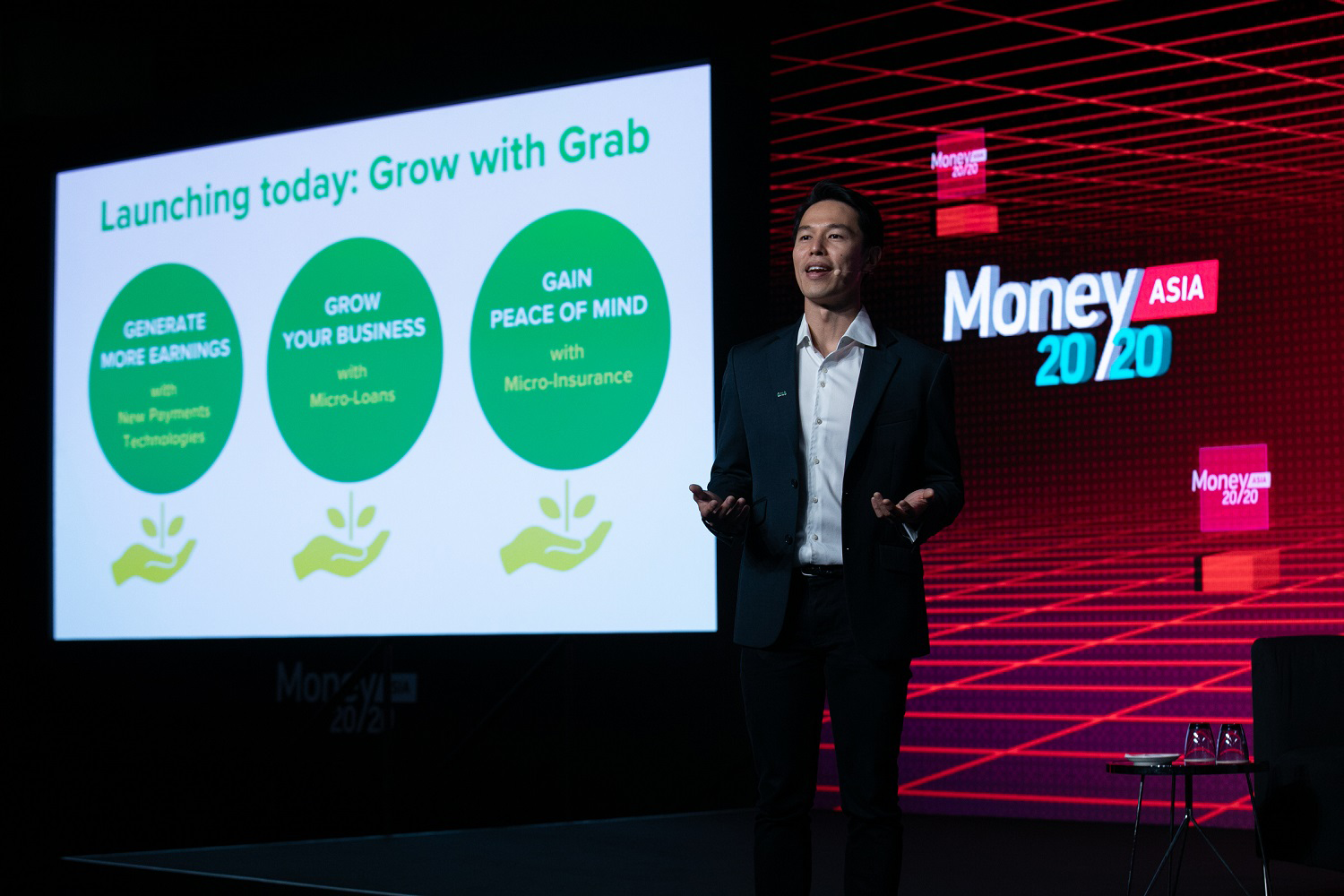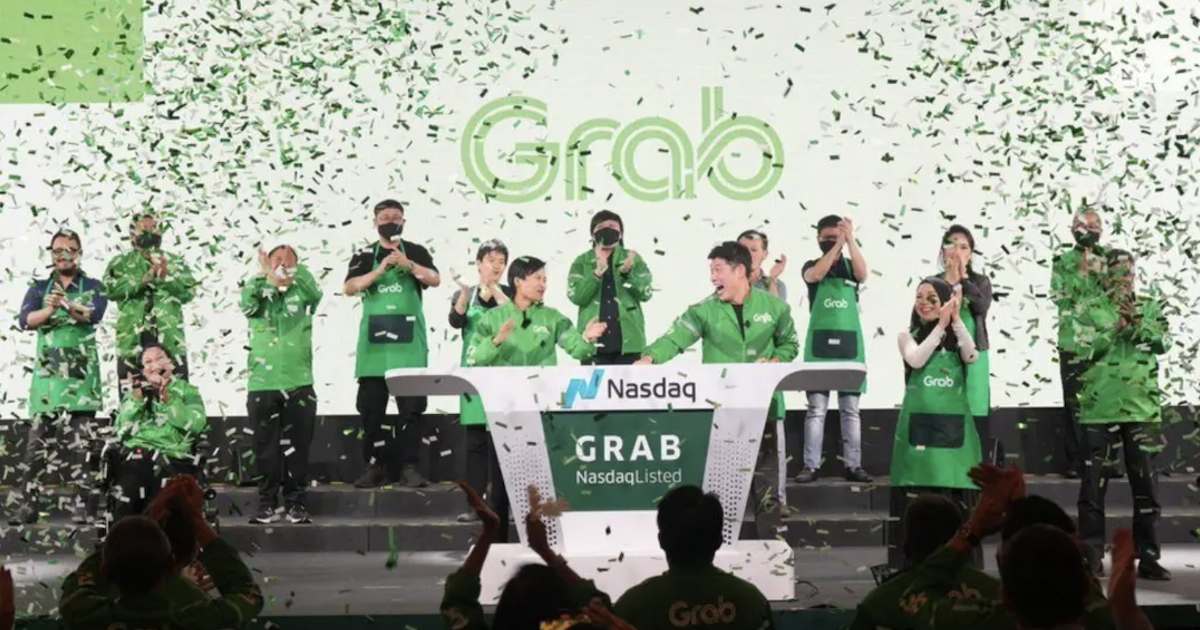As I’m sure you’ve already heard, Grab had its big day on Nasdaq yesterday (December 2), having finally gone public at a valuation of around US$40 billion, raising US$4.5 billion in the process. You can read all about it elsewhere, though — I’m not going to rob the market analysts of their jobs.
Instead, I’d like to turn your attention to something else: why is Grab even considered a great business?
You may be wondering how is it possible that a company which has burned through billions of dollars — recently posting a loss of US$988 million for Q3 2021 alone — and is yet to turn a profit, can be considered successful, let alone achieve a multibillion dollar valuation on a prime US stock exchange?
After a brief spike, Grab’s stock collapsed 20 per cent below its IPO listing price, but even that didn’t dampen the spirits of its founders and investors. Are they crazy?

Is burning money, posting endless losses some kind of a new way of becoming successful and rich? Is it a scam, perhaps?
After all, Grab isn’t exactly an exception in the IT industry, where many companies continue engaging in loss-making operations over many years (Grab’s former chief rival Uber springs to mind, Elon Musk’s Tesla is still losing money selling cars, and Singapore’s favourite e-commerce platform Shopee continues to run in the red).
Conventional wisdom would have it that the role of a company is to turn a profit for its owners. Isn’t that the purpose? After all, when you start any business, you hope to make more than you’ve put in. It’s not a charity and why do anything that keeps costing you more than you get in return? It sounds insane.
In reality, however, companies don’t exist to make profits. They exist to maximise shareholder value.
For a family store, bakery or a cafe, turning a profit is, indeed, how they maximise their shareholder (i.e. owner) value. That’s why so many small companies collapsed during the pandemic, because even a brief disruption to their operations immediately destroyed the value for their owners. Many were better off closing down rather than taking losses for months on end.
But for a large enough corporation, which aims to become publicly traded, profits are of little importance.
Its investors are risking their money purchasing a stake (that keeps bankrolling loss-making operations) not to draw cash from its day-to-day business, but in the hope of a growing valuation, which can multiply their investment.
They care about growing revenues and market share, particularly in novel, developing industries where future potential is the largest.
In this spirit, Grab’s chief shareholder, Japanese SoftBank, which has dropped US$3 billion into the company since 2014, made another US$3.1 billion on the IPO itself. It has propelled its 18.6 per cent stake to US$6.1 billion, with a very good chance of it growing even higher in the future.
And if Grab’s stock returns to the $11 it started at yesterday, SoftBank’s stake will be worth another US$1.5 billion on top of it.
Profit can be a dirty word
In fact, at a sufficiently large scale, profits are not necessarily a good sign.
Yes, making money hand over fist is not exactly bad, but it may also suggest that the company is stagnating instead of investing into even more valuable activities.
The value of every dollar in profit is actually less than a dollar to the company and its shareholders (it’s a dollar minus income taxes to the government and inflation). But the value of every well-invested dollar may be worth even a few dollars in the company’s market capitalisation. And this is what shareholders want maximised.
For a great example, let’s take a look at Amazon:
/cdn.vox-cdn.com/uploads/chorus_asset/file/10139779/YzT65.png)
Until 2018, Amazon has barely ever turned a profit — and if it did, it was tiny. Why?
Because it kept reinvesting every penny in itself. It spent money hiring more people, buying more equipment, building better warehouses, trucks, even airplanes and, of course, its ever-growing IT infrastructure necessary to handle skyrocketing sales in and out of the USA.
This is how Amazon Web Services were born in 2002, initially out of Amazon’s own needs, over time becoming one of the backbones of the global internet. AWS opened advanced cloud computing services to millions of companies around the world, hosting anything and everything today, from silly GIFs, through websites and mobile apps, to sophisticated enterprise software and AI.

Each dollar spent on these investments ultimately multiplied in shareholder value, exhibited by the market capitalisation of the company, which today is just shy of US$2 trillion. All of that while barely turning a profit over most of its existence.
If it had tried to maximise its profits instead, it would have grown far more slowly, paid 30 to 40 per cent of each dollar in taxes to the state and would never have been able to achieve the scale it has reached now.
You may know Amazon for being a giant online store but in reality, the best performing part of the business is its least known to the broader public: AWS.

Grab is considered a successful, attractive company for the very same reasons.
Its quarterly losses, particularly during a turbulent pandemic time, when various branches of the business are going up and down in tandem with national restrictions, are not a worry.
Nor was its 20 per cent tumble on the launch day of the IPO. As Grab co-founder Anthony Tan presciently quipped after the bell rang: “The stock will go up and it will go down” — as he saw his personal wealth enter and depart billionaire territory within the subsequent few hours.
But that wasn’t the point of the IPO. The point was to raise another US$4.5 billion to continue fuelling Grab’s growth in the next few years, in the hopes of more financial stability after 2023.
Sea Ltd., for example, had traded below its IPO price for a year after its debut in 2017 at just US$15. This year, they peaked at over US$350, despite the fact that its Shopee platform keeps bleeding money.
Even after sliding to US$260, analysts retain forecasts of close to US$400 — 26 times of what the company was worth four years ago.
When investors look at Grab, they don’t see cabs and ride hailing, they don’t see cyclists delivering meals and groceries. They see a platform of millions of people who already trust Grab’s services and reputation.

The company started as a taxi hailing app, creeping up to become an Uber competitor, later moving into food delivery only to see this business explode and dwarf the mobility branch amidst the pandemic lockdowns.
The birth of GrabMart and grocery deliveries, with GrabFinance wrapped around all of these, offers another layer of digital services (including finance and banking), allowing Grab to become a superapp people will use for far more than just moving from point A to B.
Just like how Amazon started with selling books, before it became the world’s largest e-commerce retailer, cloud service provider and, recently, a full-on entertainment outfit making multibillion dollar shows (e.g. the latest take on the Tolkien’s Middle-Earth saga), companies like Grab are seen for the opportunities access to millions of willing buyers gives them, not their current operations.
A dollar spent (even a borrowed one) on growth into new markets and new services, gives a promise of a future return far outweighing the current expenses.
Get $20 off your order on our all new VP Label marketplace when you checkout with Pace and the code PACEVP20 (min spend $80). Discover and shop exciting homegrown brands now:
Featured Image Credit: Grab








